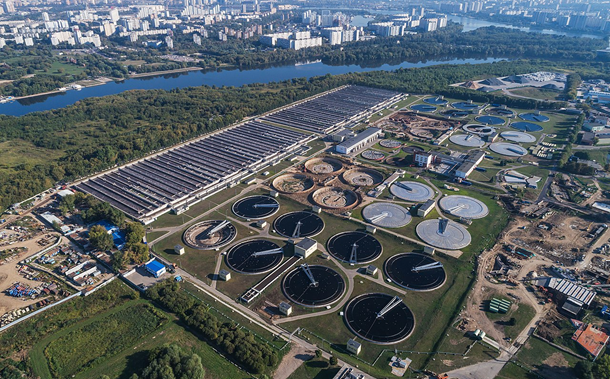Performance of Soil Biogrouting as a Subgrade Material of the Road Pavement
Downloads
Soft clay subgrade is unsuitable for road pavement because it has low bearing capacity and CBR value. Therefore, the soil needs stabilization, but with a sustainable stabilization method. One of these methods is biogrouting, namely grouting, which uses bacteria. Thus, the main objective of this study was to determine the performance of Bacillus subtilis and Bacillus amyloliquefaciens bacteria in stabilizing the soil. The performance of these bacteria was quantified by the CBR value and soil-bearing capacity experimentally in a laboratory model test with each soil thickness of 0-30 cm. The CBR value of the soil improved by the biogrouting method by about 4 times the CBR value of untreated soil. The increase in bearing capacity was obtained about 4 times for treated soil with Bacillus subtilis and about 5 times for treated soil with Bacillus amyloliquefaciens. The layer thickness significantly improves the performance of the subgrade at a layer thickness of 20 cm. The new result of this study is that both bacteria are native Indonesian bacteria, so they are suitable for use in Indonesia. In addition, Bacillus amyloliquefaciens has never been used in research to increase soil-bearing capacity.
Downloads
[1] Pule, B. B., & Yendaw, J. A. (2024). The effect of geotechnical soil properties on CBR value: review. AI in Civil Engineering, 3(1), 19. doi:10.1007/s43503-024-00039-1.
[2] Waruwu, A., Telaumbanua, D. P. T., & Waruwu, T. O. (2023). Estimating Consolidation Settlement Using the Physical Properties of Clay Soil Under Embankment. International Review of Civil Engineering, 14(6), 570–579. doi:10.15866/irece.v14i6.23311.
[3] El Kamash, W., Hafez, K., Zakaria, M., & Moubarak, A. (2021). Improvement of Soft Organic Clay Soil Using Vertical Drains. KSCE Journal of Civil Engineering, 25(2), 429–441. doi:10.1007/s12205-020-0561-9.
[4] Markiewicz, A., Koda, E., & Kawalec, J. (2022). Geosynthetics for Filtration and Stabilisation: A Review. Polymers, 14(24), 5492. doi:10.3390/polym14245492.
[5] Afrin, H. (2017). A Review on Different Types Soil Stabilization Techniques. International Journal of Transportation Engineering and Technology, 3(2), 19. doi:10.11648/j.ijtet.20170302.12.
[6] Hoyme, H., Vollmert, L., & Ehrenberg, H. (2022). Plastic in the ocean and global warming: New challenges for geosynthetics. IOP Conference Series: Materials Science and Engineering, 1260(1), 012022. doi:10.1088/1757-899x/1260/1/012022.
[7] Karol, R. H. (2003). Chemical Grouting and Soil Stabilization. CRC Press. Boca Raton, United States. doi:10.4324/9780429213830.
[8] Widjajakusuma, J., & Winata, H. (2017). Influence of Rice Husk Ash and Clay in Stabilization of Silty Soils Using Cement. MATEC Web of Conferences, 138. doi:10.1051/matecconf/201713804004.
[9] Endriani, D., Bawadi, N. F., & Ritonga, A. H. (2025). The effect of adding palm shell ash on soil shear strength. IOP Conference Series: Earth and Environmental Science, 1467(1), 12014. doi:10.1088/1755-1315/1467/1/012014.
[10] Marques, A., Syahril, S., & Tita, E. E. (2024). The effect of lime and phosphoric acid on the CBR value of soft soil based on curing time. E3S Web of Conferences, 479, 6001. doi:10.1051/e3sconf/202447906001.
[11] Hendrawan, A. J., Harianto, T., Djamaluddin, A. R., & Muhiddin, A. B. (2024). Study on Pull-Up Behavior of Double Fold Anchor with Field Full Scale Test. Civil Engineering Journal, 10(12), 3998–4007. doi:10.28991/CEJ-2024-010-12-012.
[12] Mohammed, A. A., Nahazanan, H., Nasir, N. A. M., Huseien, G. F., & Saad, A. H. (2023). Calcium-Based Binders in Concrete or Soil Stabilization: Challenges, Problems, and Calcined Clay as Partial Replacement to Produce Low-Carbon Cement. Materials, 16(5), 2020. doi:10.3390/ma16052020.
[13] Yin, Z., Lekalpure, R. L., & Ndiema, K. M. (2022). Experimental Study of Black Cotton Soil Stabilization with Natural Lime and Pozzolans in Pavement Subgrade Construction. Coatings, 12(1), 103. doi:10.3390/coatings12010103.
[14] Anburuvel, A. (2024). The Engineering Behind Soil Stabilization with Additives: A State-of-the-Art Review. Geotechnical and Geological Engineering, 42(1), 1–42. doi:10.1007/s10706-023-02554-x.
[15] Behnood, A. (2018). Soil and clay stabilization with calcium- and non-calcium-based additives: A state-of-the-art review of challenges, approaches and techniques. Transportation Geotechnics, 17, 14–32. doi:10.1016/j.trgeo.2018.08.002.
[16] Mehta, K. P. (2001). Reducing the environmental impact of concrete. Concrete International, 23(10), 61-66.
[17] Zhang, X., Wang, H., Wang, Y., Wang, J., Cao, J., & Zhang, G. (2025). Improved methods, properties, applications and prospects of microbial induced carbonate precipitation (MICP) treated soil: A review. Biogeotechnics, 3(1), 100123. doi:10.1016/j.bgtech.2024.100123.
[18] DeJong, J. T., Mortensen, B. M., Martinez, B. C., & Nelson, D. C. (2010). Bio-mediated soil improvement. Ecological Engineering, 36(2), 197–210. doi:10.1016/j.ecoleng.2008.12.029.
[19] Sugata, M., Widjajakusuma, J., Augestasia, A., Zacharia, A., & Tan, T. J. (2020). The use of eggshell powder as calcium source in stabilizing expansive soil using Bacillus subtilis. Journal of Physics: Conference Series, 1567(3), 32058. doi:10.1088/1742-6596/1567/3/032058.
[20] Widjajakusuma, J., Sugata, M., Changgrawinata, A., Jap, L., Zacharia, A., & Tan, T. J. (2019). Study on tropical organic soil stabilization based on biogrouting. IOP Conference Series: Materials Science and Engineering, 620(1), 12032. doi:10.1088/1757-899X/620/1/012032.
[21] Fu, T., Saracho, A. C., & Haigh, S. K. (2023). Microbially induced carbonate precipitation (MICP) for soil strengthening: A comprehensive review. Biogeotechnics, 1(1), 100002. doi:10.1016/j.bgtech.2023.100002.
[22] Whiffin, V. S., van Paassen, L. A., & Harkes, M. P. (2007). Microbial carbonate precipitation as a soil improvement technique. Geomicrobiology Journal, 24(5), 417–423. doi:10.1080/01490450701436505.
[23] DeJong, J. T., Fritzges, M. B., & Nüsslein, K. (2006). Microbially Induced Cementation to Control Sand Response to Undrained Shear. Journal of Geotechnical and Geoenvironmental Engineering, 132(11), 1381–1392. doi:10.1061/(asce)1090-0241(2006)132:11(1381).
[24] Montoya, B. M., DeJong, J. T., Boulanger, R. W., Wilson, D. W., Gerhard, R., Ganchenko, A., & Chou, J.-C. (2012). Liquefaction Mitigation Using Microbial Induced Calcite Precipitation. GeoCongress, 1918–1927. doi:10.1061/9780784412121.197.
[25] Cheng, L., Cord-Ruwisch, R., & Shahin, M. A. (2013). Cementation of sand soil by microbially induced calcite precipitation at various degrees of saturation. Canadian Geotechnical Journal, 50(1), 81–90. doi:10.1139/cgj-2012-0023.
[26] Diana, N. A., Soemitro, R. A. A., Ekaputri, J. J., Satrya, T. R., & Warnana, D. D. (2025). Biogrouting with microbial-induced carbonate precipitation (MICP) for improving the physical and mechanical properties of granular soils potential liquefaction. MethodsX, 14. doi:10.1016/j.mex.2025.103246.
[27] Maston, O., Ouahbi, T., Taibi, S., Hajjar, A. El, Sapin, L., Esnault-Filet, A., Duchemin, B., & Fleureau, J. M. (2025). Effect of MICP treatment on the mechanical properties of clay soils. Transportation Geotechnics, 50, 101483. doi:10.1016/j.trgeo.2025.101483.
[28] Payan, M., Sangdeh, M. K., Salimi, M., Ranjbar, P. Z., Arabani, M., & Hosseinpour, I. (2024). A comprehensive review on the application of microbially induced calcite precipitation (MICP) technique in soil erosion mitigation as a sustainable and environmentally friendly approach. Results in Engineering, 24, 103235. doi:10.1016/j.rineng.2024.103235.
[29] Feng, J., Chen, B., Sun, W., & Wang, Y. (2021). Microbial induced calcium carbonate precipitation study using Bacillus subtilis with application to self-healing concrete preparation and characterization. Construction and Building Materials, 280, 122460. doi:10.1016/j.conbuildmat.2021.122460.
[30] Harwood, C. R., Pohl, S., Smith, W., & Wipat, A. (2013). Bacillus subtilis. Model Gram-Positive Synthetic Biology Chassis. Methods in Microbiology, 40, 87–117. doi:10.1016/B978-0-12-417029-2.00004-2.
[31] Zakavi, M., Askari, H., & Shahrooei, M. (2024). Isolation and characterization of a resistance Bacillus subtilis for soil stabilization and dust alleviation purposes. Scientific Reports, 14(1), 25490. doi:10.1038/s41598-024-77613-1.
[32] Hasriana, H. (2018). A Study on Clay Soil Improvement with Bacillus Subtilis Bacteria as the Road Subbase Layer. International Journal of GEOMATE, 16(52). doi:10.21660/2018.52.97143.
[33] Alkadri, Djamaluddin, A. R., Harianto, T., & Arsyad, A. (2024). Soil Mechanical Characteristics Improvement With Bacterial Biocementation Technology. International Journal of GEOMATE, 26(115), 27–33. doi:10.21660/2024.115.4160.
[34] Ngalimat, M. S., Yahaya, R. S. R., Baharudin, M. M. A. A., Yaminudin, S. M., Karim, M., Ahmad, S. A., & Sabri, S. (2021). A review on the biotechnological applications of the operational group bacillus amyloliquefaciens. Microorganisms, 9(3), 1–18. doi:10.3390/microorganisms9030614.
[35] Lee, Y. N. (2003). Calcite Production by Bacillus amyloliquefaciens CMB01. Journal of Microbiology, 41(4), 345–348.
[36] Hemayati, M., Nikooee, E., Habibagahi, G., Niazi, A., & Afzali, S. F. (2023). New non-ureolytic heterotrophic microbial induced carbonate precipitation for suppression of sand dune wind erosion. Scientific Reports, 13(1), 5845. doi:10.1038/s41598-023-33070-w.
[37] Mohebbi, M. M., Habibagahi, G., Niazi, A., & Ghahramani, A. (2019). A laboratory investigation of suppression of dust from wind erosion using biocementation with Bacillus amyloliquefaciens. Scientia Iranica, 26(5), 2665–2677. doi:10.24200/sci.2018.20220.
[38] Waruwu, A., Widjajakusuma, J., Denzel, B., & Calvin, F. (2024). the Bearing Capacity of Peat Soil With Bamboo Reinforcement. International Journal of GEOMATE, 26(113), 19–25. doi:10.21660/2024.113.4090.
[39] Purwana, Y. M., Nikraz, H., & Jitsangiam, P. (2012). Experimental study of suction-monitored CBR test on sand-kaolin clay mixture. International Journal of GEOMATE, 3(2), 419–422. doi:10.21660/2012.6.39.
[40] Varela, F., Cerro-Prada, E., & Escolano, F. (2018). Preparation, characterization and modeling of unbound granular materials for road foundations. Applied Sciences (Switzerland), 8(9), 1548. doi:10.3390/app8091548.
[41] Li, T., Kong, L., & Liu, B. (2020). The California bearing ratio and pore structure characteristics of weakly expansive soil in frozen areas. Applied Sciences (Switzerland), 10(21), 1–22. doi:10.3390/app10217576.
[42] Lasheb, M., & Melbouci, B. (2025). Experimental Study of the Dynamic Behavior of Stabilised Marl with Lime. Civil Engineering Journal (Iran), 11(1), 131–160. doi:10.28991/CEJ-2025-011-01-09.
- Authors retain all copyrights. It is noticeable that authors will not be forced to sign any copyright transfer agreements.
- This work (including HTML and PDF Files) is licensed under a Creative Commons Attribution 4.0 International License.![]()














